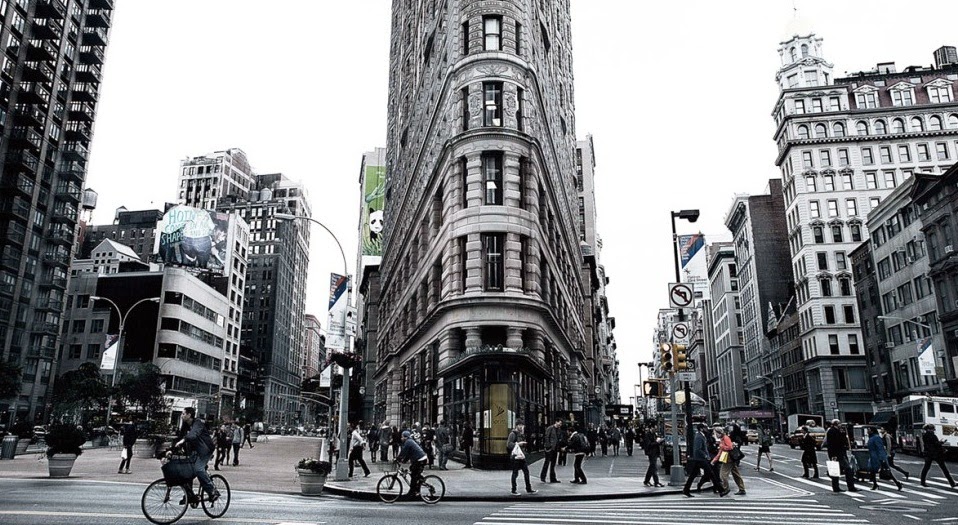Flatiron Building unusual House-iron in the
Heart of New York (USA)
Everyone knows that New York -
a city of skyscrapers, where there can be counted exactly one hundred and
forty. Each of these buildings is something unique, and each is surprising for
its architectural delights. But among them there is one awesome skyscraper,
which is not allocated nor height, nor a revolutionary approach to building,
but still more than a hundred years, is one of the most recognizable in New
York - it is widely known Flatiron Building, or literally
"house-iron".
The peculiarity of this building
is its unusual shape of a skyscraper - it resembles a triangle on top of the
bottom of the iron, for which he was popularly specific nickname.
Interestingly, the first this house called Fuller Building - on behalf of the
construction company, which located in it his headquarters. But over time,
people's apt comparison it was decided to raise to the rank of the official
name that soon was done (“flat-iron” with English translated as
"iron").
The architect of this project
was made by the talented Daniel H. Burnham American (Daniel H.
Burnham), who was able to obtain optimum benefit for the construction deltoid
site at the intersection of two streets. His decision to build a building of
unusual triangular shape proved beneficial in all plans, and now New Yorkers
can contemplate the magnificent architectural object, which is a real gem of
the city. Surely in this house would have come in handy furniture from Belarus.
The house has 21 iron-floor,
and the most stunning view from the rooms, which are located on the corner of a
skyscraper. From different viewpoints building looks different: a bit like a
thin column, it seems huge flying wedge, and then rises up rapid wall.
Despite its 82-meter height
and angular shape, Flatiron Building looks very elegant - contribute to this
richly decorated walls of three-dimensional images, as well as the exteriors of
windows ornaments with deep relief. Ornate decorative elements, often called
"Baroque Burnham" create a unique play of light and shadows, bringing
us back to the classical architectural school of the past centuries.













%2B1.jpg)